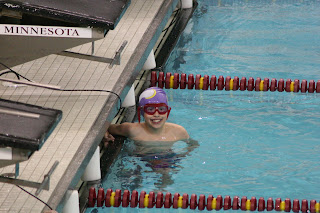This past week I finished off the sequel to "Once a Runner", perhaps the best running novel of all time. The sequel is "
Again to Carthage" by John L. Parker Jr.

Parker has written a worthy sequel to OAR. While the book stands up well by itself, if you view it as an extension of the original story and read them sequentially, I think it makes the new novel a more meaningful tale. For the runners out there, be assured that John once again captures the elements of our sport that make it so dear to us.
The workouts, the sacrifice and the racing are all there, and the more mature Quenton Cassidy (the main character) is a logical extension of the original character. I also find myself looking back to that time period to look up the runners names touted in the book (recall Don Kardong??) to recall a time from my youth when I followed those runners as much as athletes in any other mainstream sport.
Without giving too much away from the book, I wanted to look back at the US Olympic Marathon trials from the Golden Age of the running boom. So I did just that. Take a look at these names and let me know who your recognize. Was there anyone from this group that you followed or inspired you to greater things? As many of us can recall the time and place where important events in history took place (JFK assassination, US hockey team winning gold, Michael Johnson winning the 200 at Atlanta), can you recall anything specifically? I can recall when Frank Shorter took gold at Munich....it may have even changed my life.
I also was able to meet Frank Shorter in Texas circa 1989 as shown below. You can read the story about
how this happened here.

Here then, are the US Olympic Trial results from the Golden Age (72-80):
Date: July 9, 1972
Location: Eugene, Oregon
The details: 100 Starters, 66 Finishers1) Kenny Moore (OR) 2:15:58
2) Frank Shorter (CO) 2:15:58
3) Jack Bacheler (FL) 2:20:30
4) Jeff Galloway (FL) 2:20:30
5) Greg Brock (CA) 2:22:30
6) Don Kardong (CA) 2:22:42
7) Mark Covert (CA) 2:23:35
8) Tom Hoffman (WI) 2:23:45
9) Norm Higgins (CT) 2:24:08
10) Skip Houk (NV) 2:24:41
Note - Shorter won Gold at the Games in MunichDate: May 22, 1976
Location: Eugene, Oregon
The details: 87 Qualifiers, 77 Starters, 49 Finishers1) Frank Shorter (FL) 2:11:51
2) Bill Rodgers (MA) 2:11:58
3) Don Kardong (WA) 2:13:54
4) Tony Sandoval (CA) 2:14:58
5) Tom Fleming (NJ) 2:15:48
6) Bob Varsha (GA) 2:15:50
7) John Bramley (CT) 2:17:16
8) Kirk Pfeffer (CA) 2:17:58
9) Jeff Galloway (GA) 2:18:29
10) Amby Burfoot (CT) 2:18:56
11) Bob Busby (MO) 2:19:05
12) Carl Hatfield (WV) 2:19:18
13) Marty Sudzina (PA) 2:19:55
14) Perry Forrester (CA) 2:20:01
15) Ron Kurrle (CA) 2:20:18
Note - Shorter took silver at Montreal. Shorter was beaten only by East Germany's Waldemar Cierpinski, who was part of the East-German drug-doping machine. However, the International Olympic Committee has never chosen to take action against East German athletes. The only other American to medal in the marathon since Shorter's day is Meb Keflezighi, second in the 2004 Athens Olympic Marathon.
Date: May 24, 1980
Location: Buffalo, NY
Time standard: 2:21:54
The details:225 Qualifiers, 192 Starters, 125 Finishers1) Tony Sandoval (NM) 2:10:19 Trials Rec
2) Benji Durden (GA) 2:10:41
3) Kyle Heffner (TX) 2:10:55
4) Ron Tabb (TX) 2:12:39
5) Jeff Wells(TX) 2:13:16
6) Kevin McCarey (OR) 2:13:17
7) Randy Thomas (MA) 2:13:40
8) Gordon Minty (MI) 2:13:53
9) Frank Richardson (IA) 2:14:17
10) Dennis Rinde (CA) 2:14:22
11) Walt Saeger (OH) 2:14:38
12) Dave Smith (CA) 2:14:48
13) David Patterson (PA) 2:15:09
14) Chuck Hattersley (CO) 2:15:30
15) Jeff Foster (PA) 2:15:56
16) Dick Beardsley (MN) 2:16:01
17) John Dimick (VT) 2:16:08
18) Kim Burke (PA) 2:16:10
19) John Vitale (CT) 2:16:22
20) Ted Castaneda (CO) 2:16:38
21) Mike Pinocci (NV) 2:16:46
22) Gary Fanelli (PA) 2:16:49
23) Chuck Smead (CA) 2:16:58
24) Cliff Karthauser (NE) 2:16:58
25) Bill Glad (WA) 2:17:23
26) John Miley (OK) 2:17:23
27) Roy Kulikowski (SC) 2:17:26
28) Bruce Robinson (MD) 2:17:30
29) David Miley (OK) 2:17:40
30) Rick Callison (OH) 2:17:42
Note - 56 men under 2:20 - a Trials record. The USA boycotted the Moscow Games thanks to the peanut farmer from Georgia.So, memories? Leave a comment. Would love to hear your thoughts. And happy running!




















